Related Research Articles

Camilla Christine Hall was an American artist, college trained social worker, and a member of the Symbionese Liberation Army (SLA). She is best known for her membership in the SLA, the group that kidnapped heiress Patty Hearst.
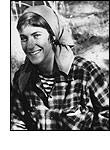
Patricia Monique Soltysik was an American woman, best known as one of the founders of the Symbionese Liberation Army.

The United Federated Forces of the Symbionese Liberation Army (SLA) was an American organization active between 1973 and 1975 that committed bank robberies, two murders, and other acts of violence. The SLA became internationally notorious for the kidnapping of heiress Patricia Hearst, abducting the 19-year-old from Berkeley, California.
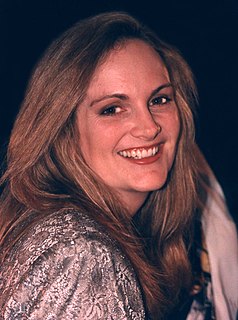
Patricia Campbell Hearst is an American author and actress, and a granddaughter of American publishing magnate William Randolph Hearst. She became internationally known for events following her 1974 kidnapping by the left-wing organization Symbionese Liberation Army. She was found and arrested 19 months after being abducted, by which time she was a fugitive wanted for serious crimes committed with members of the group. She was held in custody, and there was speculation before trial that her family's resources would enable her to avoid time in prison.
William Lawton Wolfe was one of the founding members of the Symbionese Liberation Army (SLA). While in the group, he adopted the name "Kahjoh", though the media misspelled as "Cujo".
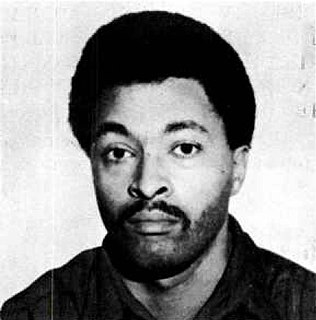
Donald David DeFreeze, also known as Cinque Mtume and using the nom de guerre "Field Marshal Cinque," was the leader of the Symbionese Liberation Army, an American far-left group.
Nancy Ling Perry also known as Nancy Devoto, Lynn Ledworth, and Fahizah, was a member of the Symbionese Liberation Army (SLA).
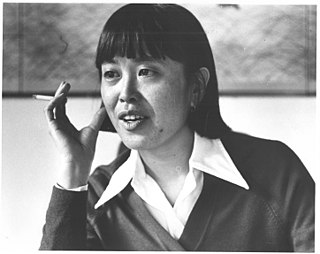
Wendy Masako Yoshimura is an American still life watercolor painter better known for her involvement with the Symbionese Liberation Army. She was born in a World War II-era California internment camp, and raised in Japan and California's Central Valley. She encountered and became involved in radical politics during her last year of art college as a result of meeting Willie Brandt, founder of the Revolutionary Army in Berkeley, California.
Venceremos was an American far-left political group active in the Palo Alto, California area from 1969 to 1973.
Angela DeAngelis Atwood, known as General Gelina, was a founding member of the Symbionese Liberation Army (SLA), an American terrorist group which kidnapped Patricia Hearst and robbed banks. She was killed, along with five other SLA members, in a nationally televised shootout with the Los Angeles Police Department.

Emily Harris was, along with her husband William Harris (1945–), a member of the Symbionese Liberation Army (SLA), an American left-wing terrorist group involved in bank robberies, kidnapping and murder. In the 1970s, she was convicted of kidnapping Patty Hearst. In 2003, she was convicted of murder in the second degree for being the shooter in a 1975 slaying that occurred while she and other SLA members were robbing a bank in California. She was sentenced to eight years in prison for the murder.
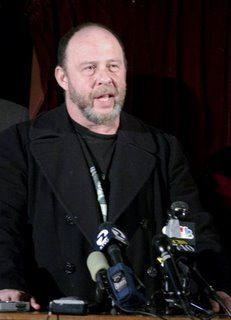
Stuart Hanlon is an attorney based in San Francisco, California who represented San Francisco Police Chief Greg Suhr, Geronimo Pratt and members of the Symbionese Liberation Army.

Guerrilla: The Taking of Patty Hearst is a 2004 PBS documentary film about the 1974 kidnapping of Patty Hearst by the Symbionese Liberation Army left-wing revolutionary group. It was directed by Robert Stone, and features interviews with Timothy Findley and SLA members Russ Little and Michael Bortin.
James William Kilgore is an American research scholar at the University of Illinois' Center for African Studies in Champaign–Urbana. Kilgore was involved with the Symbionese Liberation Army (SLA), an American left-wing terrorist organization. After the arrest of the core SLA members in 1975, Kilgore fled a criminal indictment for 27 years, living in Zimbabwe, Australia and South Africa. During his time as a scofflaw, Kilgore wrote a number of books and articles under the pseudonym John Pape, the name of a dead baby in Washington State whose birth certificate Kilgore criminally stole. He built a career as an educator, researcher and far-radical activist, before being arrested in Cape Town, South Africa, in November 2002, extradited to the United States and subsequently serving six and a half years in prisons in California. During his incarceration he wrote several novels. The first of these, We Are All Zimbabweans Now, was published a month after his release in 2009 by Umuzi Publishers of Cape Town. In 2015, he published a non-fiction book, Understanding Mass Incarceration: A People's Guide to the Key Civil Rights Struggle of Our Time.
Thero Lavon Wheeler (1945–2009) was an American criminal and founding member of the Symbionese Liberation Army, a left-wing terrorist organization known for bank robberies, two murders, and other acts of violence including the kidnapping of Patty Hearst.
Lake Wellington Headley was a private detective and writer who made a name for himself by being hired to investigate high-profile crimes. Crimes included the Wounded Knee incident, Patty Hearst kidnapping, court-martial of Clayton Lonetree, the murder of Vicki Morgan, and the Don Bolles car bombing. In a series of true crime books, Headley wrote about his investigations.
Mary Alice Siem was a student at the University of California, Berkeley who was one of the founding members of the Symbionese Liberation Army (SLA), an extremist group known for the kidnapping of heiress Patty Hearst.
Joseph Remiro is one of the founding members of the Symbionese Liberation Army. He used the pseudonym "Bo" while he was a member of the group.
Colston Richard Westbrook (1937–1989) was a teacher and linguist who worked in the fields of minority education and literacy, after government service in various capacities.
Third Sight is an underground rap trio from the Bay Area of California. Formed in the early 1990s, the group's members are MC Jihad, Dufunk, and D-Styles.
References
- ↑ Keith, Jim (1997). Mind Control, World Control. Adventures Unlimited Press. p. 176.
- 1 2 3 4 Tibbott, Julie (2015). Members Only: Secret Societies, Sects, and Cults Exposed!. Houghton Mifflin Harcourt. pp. 206–7.
- ↑ "The Black Panther Party". Marxists Internet Archive.
- 1 2 Good, Donna (1980). California Prisons: Summary Statistics of Felon Prisoners and Parolees. Department of Corrections.
- 1 2 Schreiber, Brad (2016-08-02). Revolution's End: The Patty Hearst Kidnapping, Mind Control, and the Secret History of Donald DeFreeze and the SLA. Skyhorse Publishing, Inc. ISBN 9781510714274.
- ↑ "Public Law: 1968" (PDF). United States Government Publishing Office.
- 1 2 3 Spieler, Geri (2008-12-23). Taking Aim at the President: The Remarkable Story of the Woman Who Shot at Gerald Ford . Macmillan. p. 69. ISBN 9780230621848.
- ↑ Newton, Michael (2003-10-31). The FBI Encyclopedia. McFarland. ISBN 9781476604176.
- 1 2 3 Daugherty, Tracy (2015-08-25). The Last Love Song: A Biography of Joan Didion. Macmillan. ISBN 9781250010025.
- 1 2 "American Experience | Guerrilla: The Taking of Patty Hearst | People & Events | PBS". www.pbs.org. Retrieved 2016-10-06.
- ↑ Burrough, Bryan (2016-04-05). Days of Rage: America's Radical Underground, the FBI, and the Forgotten Age of Revolutionary Violence. Penguin Publishing Group. ISBN 9780143107972.
- ↑ Keith, Jim (1997). Mind Control, World Control. Adventures Unlimited Press. p. 113. ISBN 9780932813459.
- ↑ Cummins, Eric (1994-01-01). The Rise and Fall of California's Radical Prison Movement. Stanford University Press. ISBN 9780804722322.